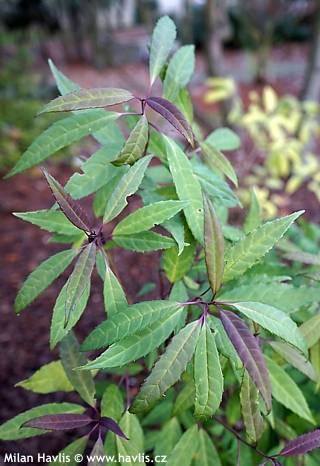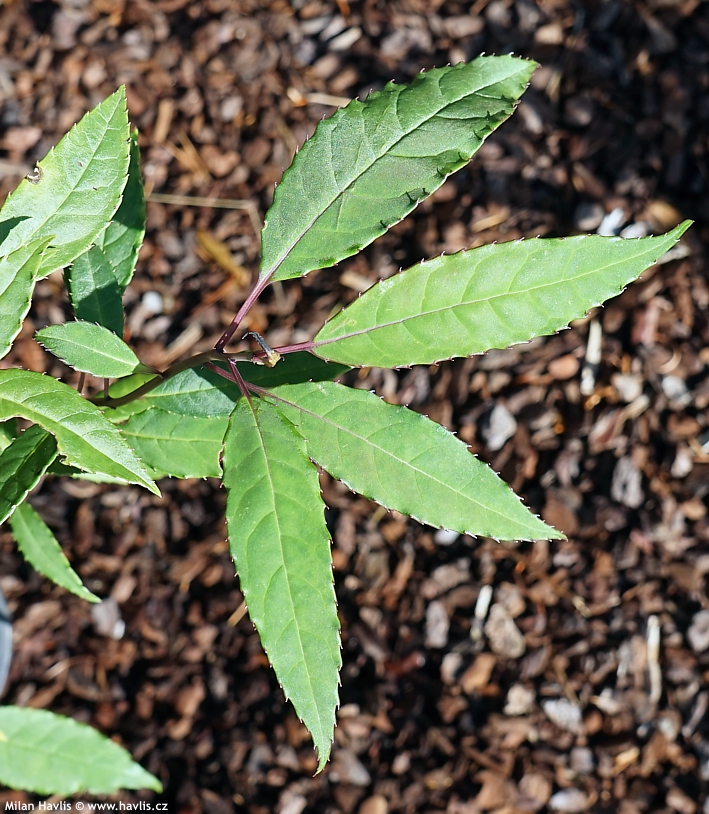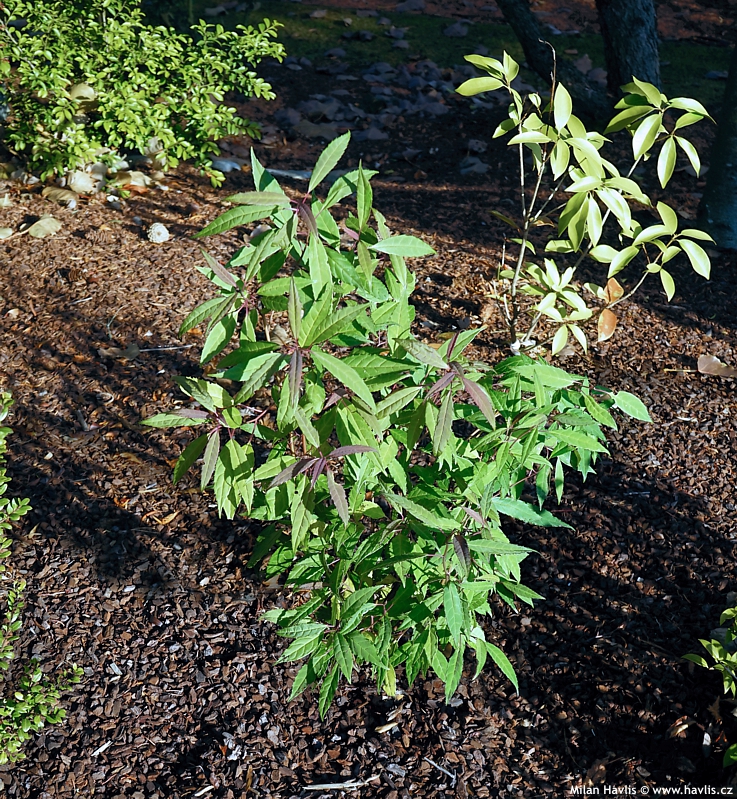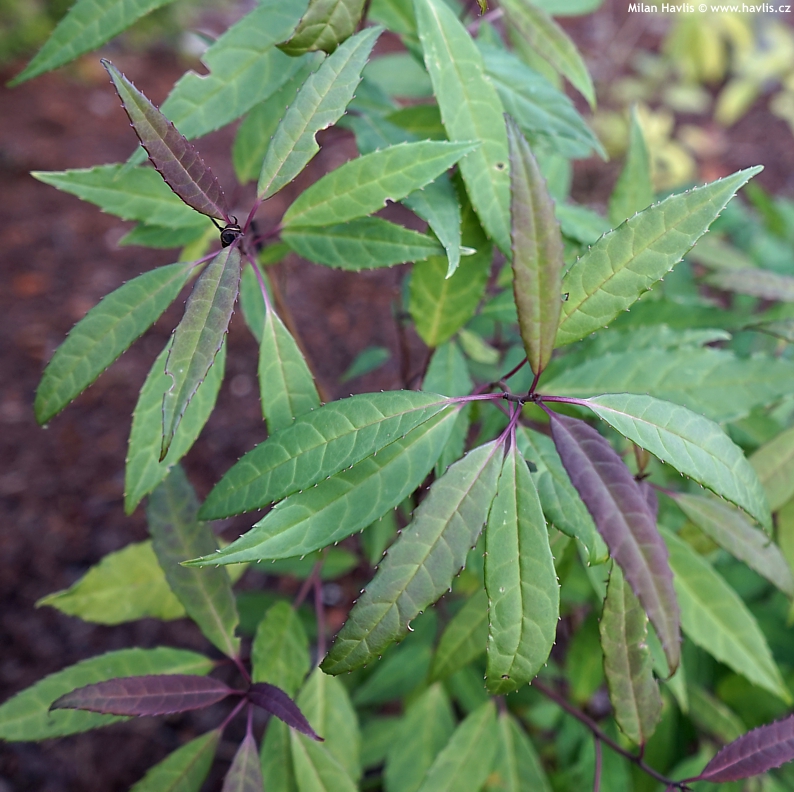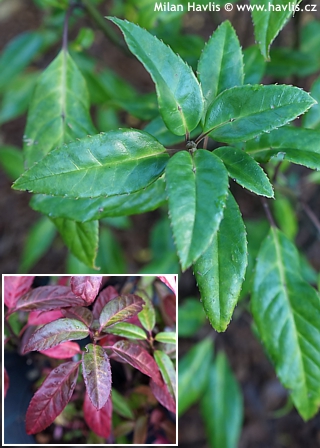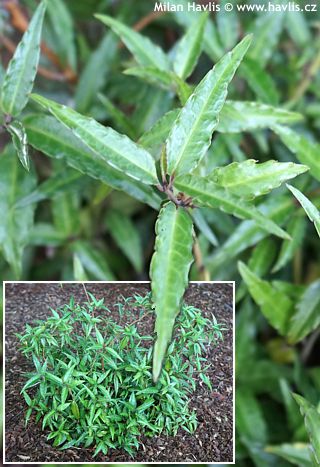Helwingia himalaica Himalayan helwingia
size/type
medium-sized shrub,medium-sized shrub
usual height
1-2,5m
usual width
1-2,5m
leaves
evergreen broadleaf
colour of leaves
flowers
less showy but noticeable
location
semi-shade to shade
soil type
acidic (peaty) to neutral
soil moisture requirements
evenly moist (dislikes drought)
USDA zone (lowest)
7 (down to -23°C)
winter protection
for zone 5+6

for zone 7

categorized
Helwingia
Helwingia is an Asian taxon, formerly listed under cornaceae family but thanks to its unique characteristics a new family was created just for them in late 19th century – helwingiaceae. The plants form deciduous to evergreen shrubs whose main attraction are the small flowers on the midribs of the leaves. Helwingia is not generally known in Europe or America, it is mostly cultivated in specialty nurseries for plant collectors and botanical gardens as a rare plant. Being rare as well as very variable brings an expected result – mistakes in naming. In order to avoid that we rely on a rather comprehensive study put together by Japanese botanists Hiroshi Hara and Sachiko Kurowasa, published in the Flora of Eastern Himalaya by the University of Tokyo in 1975.Description of the plant:
Himalayan helwingia comes from East Nepal and West China and was first described in 1879. It is a rare, evergreen, or semi-deciduous shrub with attractive and unusual leaves. They are 5-11 cm long, 1-4 cm wide, narrowly lanceolate, caudate (with a small tail at the tip), rather matte, shallowly serrated at margins, maroon as they emerge and medium green when mature. The plant always keeps its newest leaf red even in winter.It grows moderately to fast (30-40 cm per year), making slender, upright shoots, spreading by root runners owing to which its forms dense thickets rather than shrubs, and in colder climate it may act like a subshrub with only about one or two feet from the ground is preserved after winter. Unrequired spreading can be prevented by covering its roots by weed control fabric. In mid spring small flowers are produced in the centre of the widest parts of the leaves (midribs) and are followed by dark red or black berries in late summer and autumn. You must have both male and female plants to gain fruit – plants are dioecious.
Helwingia naturally grows as an understory plant, it prefers semi-shaded or shaded locations under tall trees, between larger shrubs, at the shady back of the border, or behind walls and houses with limited sunlight. It likes constantly moist but well-drained soil. We experienced the best results with acidic soil where its foliage produced the richest colour. It does not like drought so keep it mulched. We have tested its hardiness so far to -24 °C (USDA zone 6).
Last update 28-11-2021
QUICK PRICE OVERVIEW
CURRENTLY SOLD OUT
WANT TO TRY A SIMILAR PLANT?












